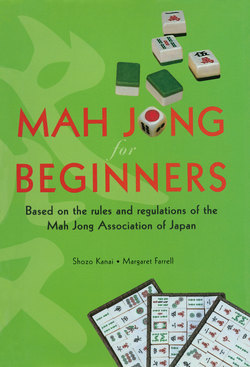Читать книгу Mah Jong for Beginners - Shozo Kanai - Страница 8
На сайте Литреса книга снята с продажи.
ОглавлениеCHAPTER I.
HISTORY OF MAH JONG
Man Jong is the national game of China. It is sometimes called the Chinese Game of the Four Winds.
There are many theories about its origin but none of them is valid or reliable. It is believed that it originated from one form of card playing and during the first stage had 40 pieces, called Pai (pronounced pie, rhymes with lye), (in English usually called tiles, the term used in this book) which were entirely different from those of today.
Down to the 17th Century the number of tiles increased to 108. These had the portraits of the 108 Brigands of a then-famous novel.
As time elapsed the number of tiles increased until there were more than 160, having many kinds of Bonus tiles, including Flower tiles. Revolutionists appeared and cut down the number to make the game more interesting. Rules and regulations were then decided and have remained the same until the present day. The Flower tiles that we now find in the set of Mah Jong are the remains of pre-revolutionary days.
Mah Jong was imported to Japan in 1907 for the first time, and received a high reputation towards 1929. There were many Mah Jong Clubs in every urban center and competitive games were held between Japan and China. After the out-break of the Sino-Japanese War, Mah Jong was suppressed in due course, but on finishing the war it again caught the public fancy, multiplying by many times its former popularity.
